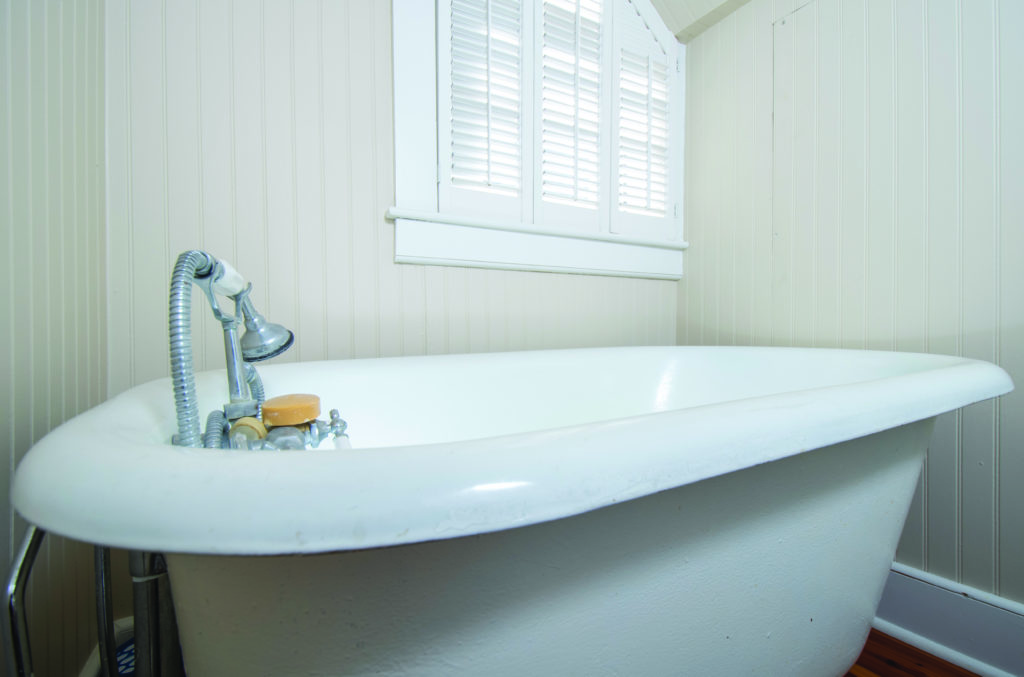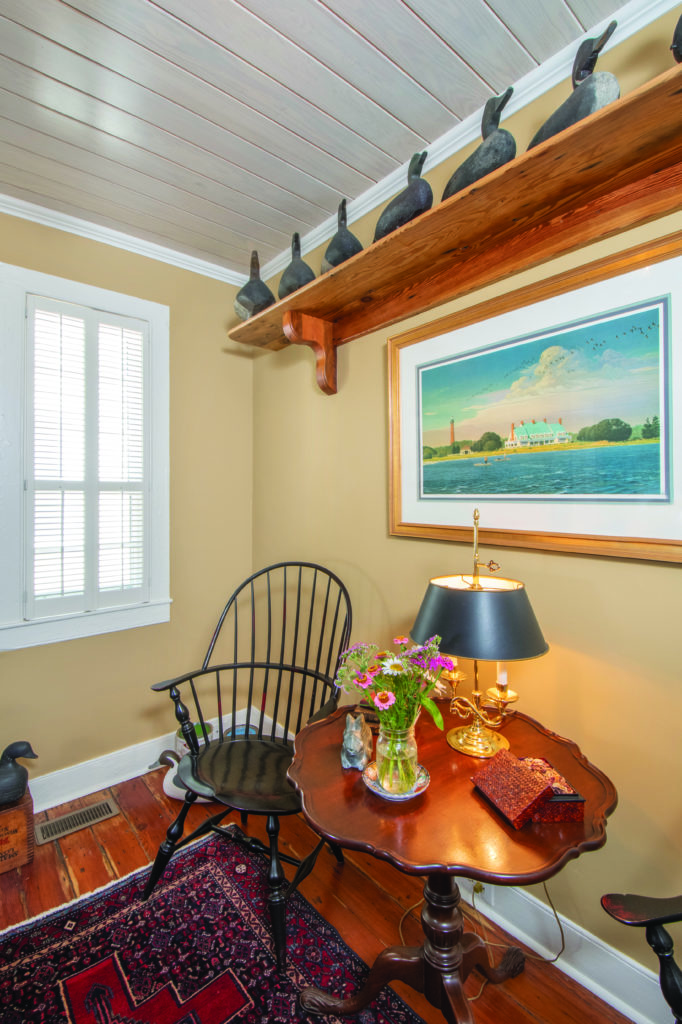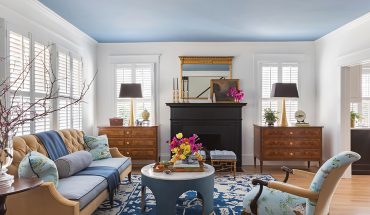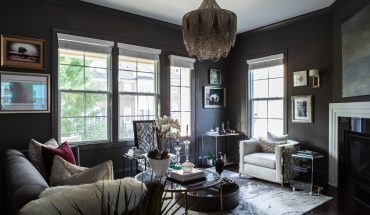Raleigh couple Gray and Debbie Reed steward the historic Beaufort home with period furnishings and paint colors.
by Ayn-Monique Klahre | photography by Dylan Ray
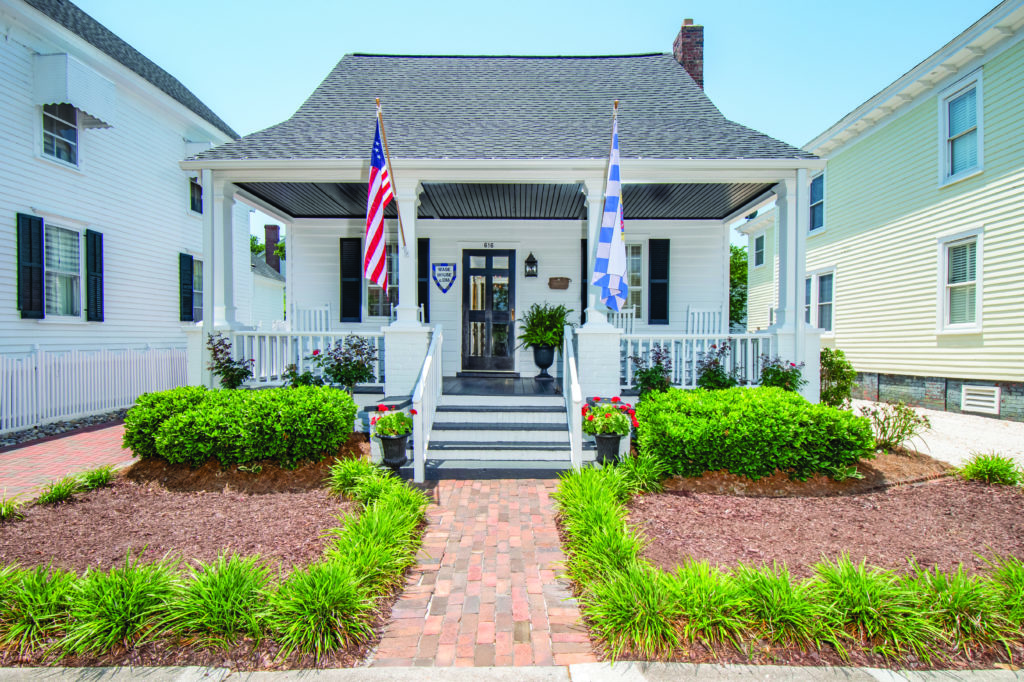
When a home predates you by some 200-plus years, that’s a lot of history to shoulder. So it goes with the Wade House in Beaufort, owned by longtime Raleighites Gray and Debbie Reed. The Wade House was built by Royal Wade, the son of Valentine Wade, an early landowner and justice of the peace in North Carolina who’s said to have established the first tavern on the Outer Banks in 1757. In 1785, Royal moved to Beaufort and built this house, where he was married the next year to Phebe Bishop.
As the story goes, Royal and Phebe Wade, who had eight children, lived in the home until around 1800, when they moved to Ohio, a non-slaveholding state more aligned with their Quaker beliefs.
By 1895, the home was owned by E.R. and Rose Guthrie, a prosperous fishing family.
By 1910, the Guthries wanted a bigger home, so they moved the house one lot over from its original location, at the corner of Ann and Pollock Streets, to build a bigger house on the land.
The home changed hands a few times over the decades, and the Reeds bought it in 2020 as their retirement home. “We’d been down to Beaufort many times over the years and always loved it,” Gray says.
“When we saw this one, we snapped it up.” Gray has long had an interest in historic homes — he was on the board at Preservation North Carolina for a time — and has deep family roots in this state. His direct ancestor, William Reed, was governor of colonial North Carolina in the 1720s, and his family has lived here ever since.
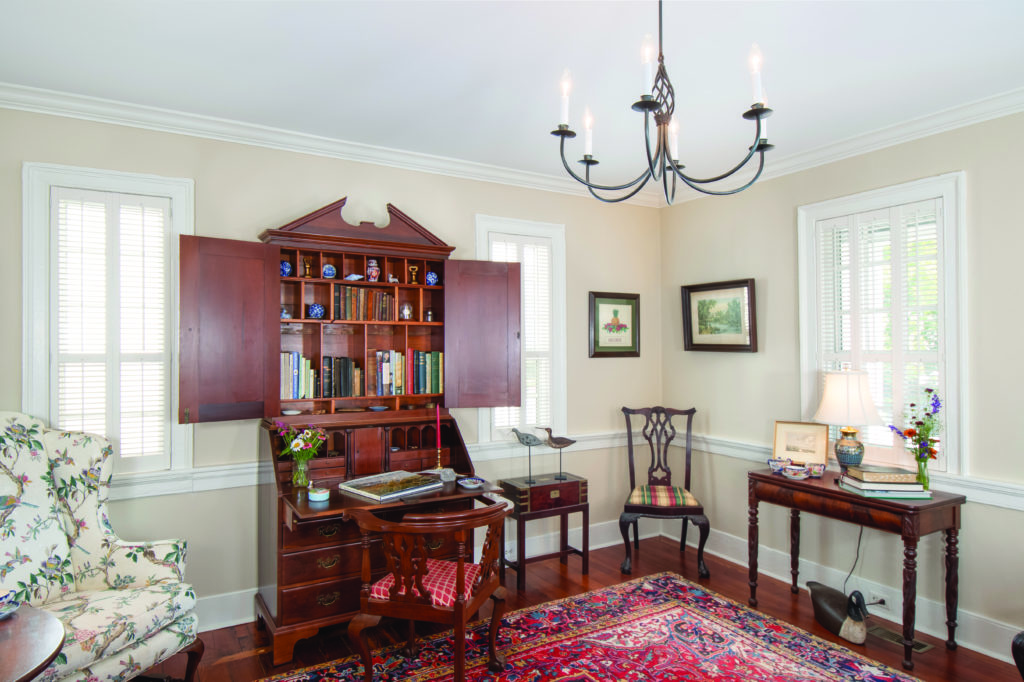
The house is a coastal cottage style, wood-framed with a simple hall-and-parlor layout and full-width front porch. A few additions have been made over the years, including a kitchen, den and screened-in porch off the back, but the original footprint is still intact. “It’s not a big house, but it’s very livable, with an open floor plan,” says Gray. The Reeds spent about a year and a half renovating the house to bring it up to date, doing mostly cosmetic work like painting and plastering, refinishing floors and shoring up ceilings.
“We wanted to respect the integrity of the home, so we’ve kept everything that’s original ,including floors, windows and moldings,” Gray says.“ We’re happy we were able to bring it up to date while keeping most everything intact,” agrees Debbie.
As an homage to the Wade House’s history, the. Reeds have filled the home with period pieces, many of them family heirlooms— and many made locally, both recently and hundreds of years ago. “Throughout the house, we’ve tried to fill it with things almost exclusively made in North Carolina,” says Gray.
One example: in the tavern room, Gray had a local builder fabricate a shelf from antique wood to hold his collection of early-1900s Currituck decoys. Underneath is a painting of The Whalehead Club in Corolla.
Now that they’re settled, they’re getting accustomed to coastal life. “We just love being a block from Taylors Creek,” says Gray. “It’s a nice place to slow it down after working for nearly 40 years.”
In addition to frequently hosting friends from the Triangle, the Reeds love the sense of community they get from being in this particular part of Beaufort, meeting neighbors and tourists from their breezy front porch. “Everybody stops when they walk by,”says Debbie.“ We’re always seeing people.” Gray agrees: “We’ve never had a house with a front porch and rocking chairs — it’s something magical.”
And part of the fun is sharing the history of the Wade House. “We are the oldest house on the block — there’s a house across the street that dates to 1830, and of course the one next to us was built in 1910 — and you feel a sense of stewardship,” says Debbie. “You feel like you’re just borrowing the home for a time. We want to leave it better than we found it.”
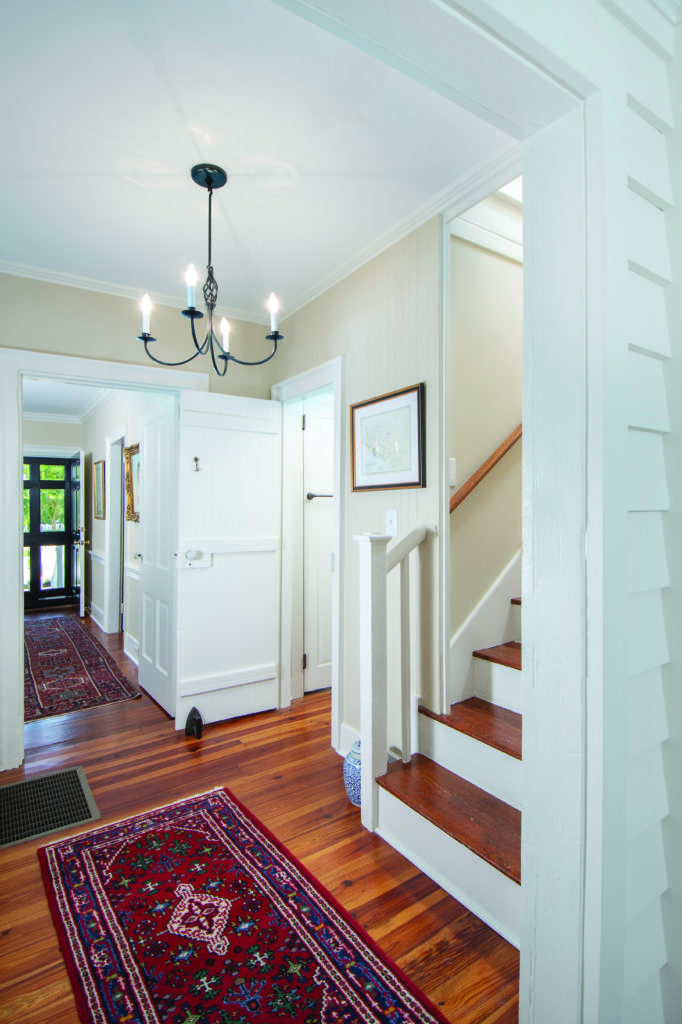
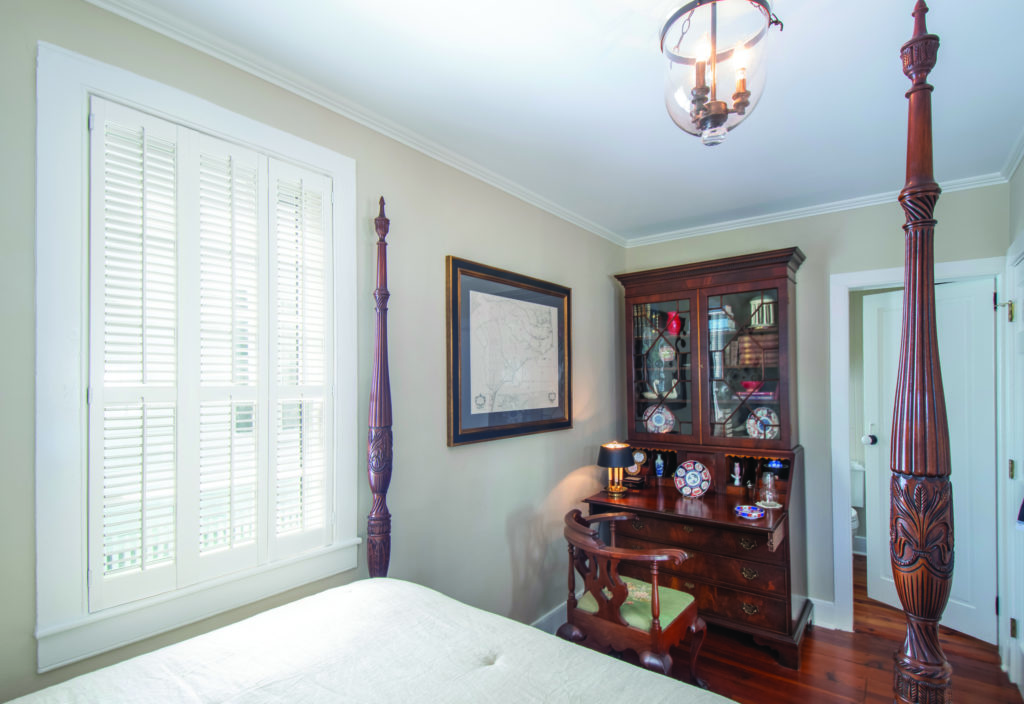
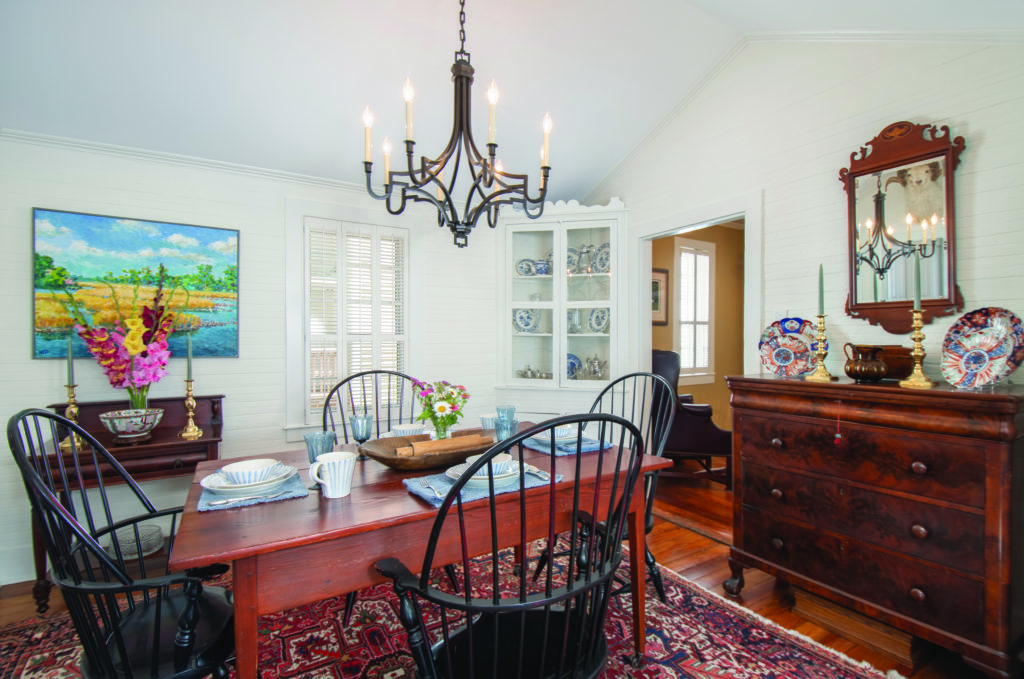
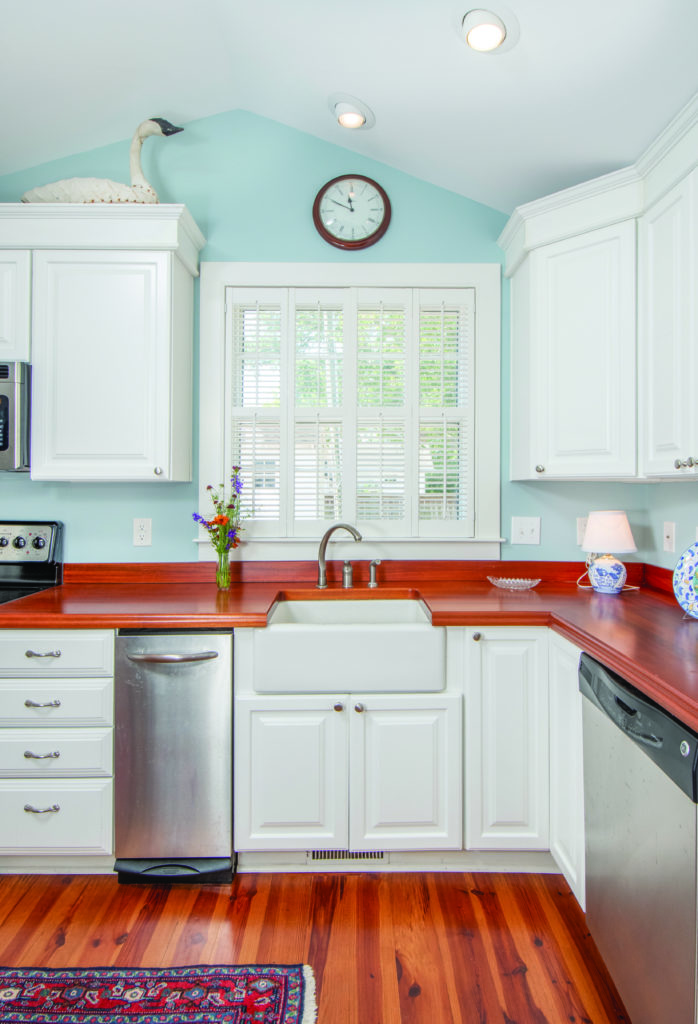
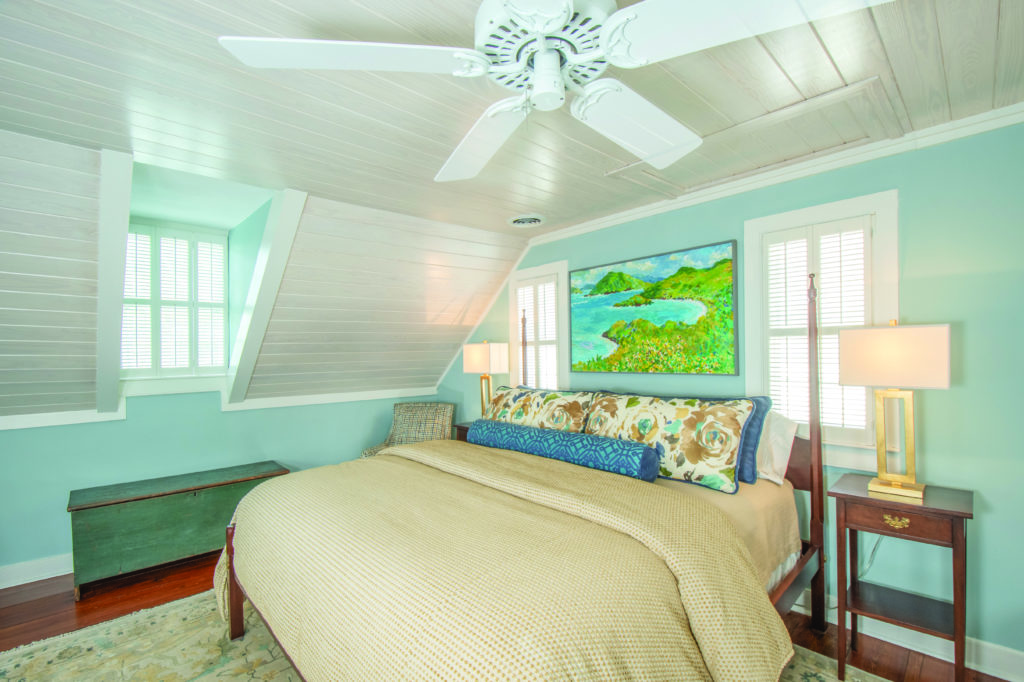
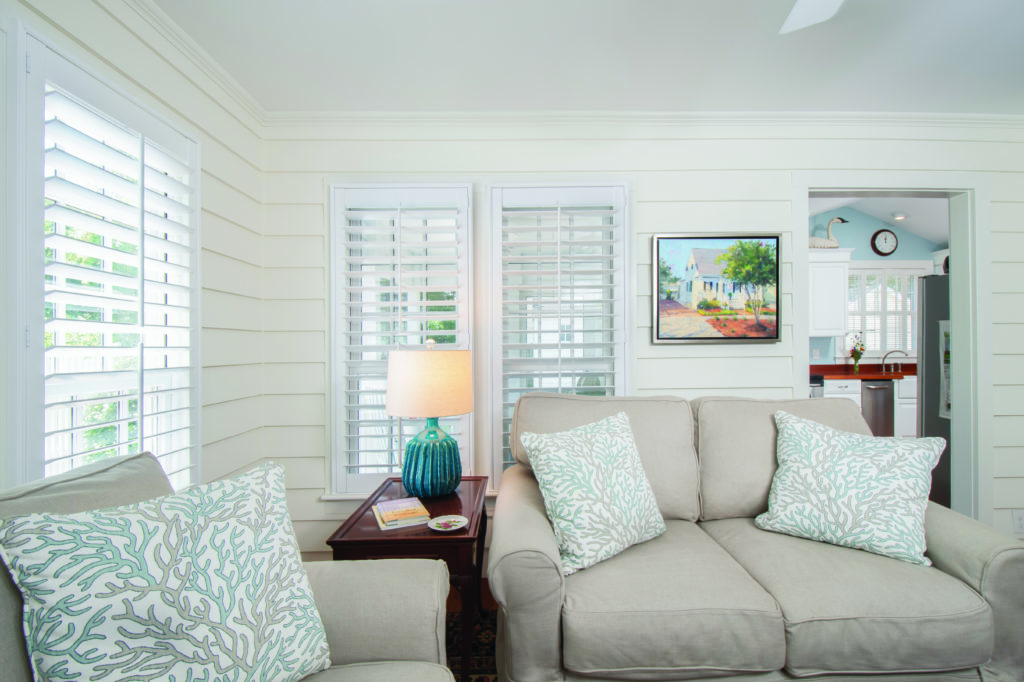
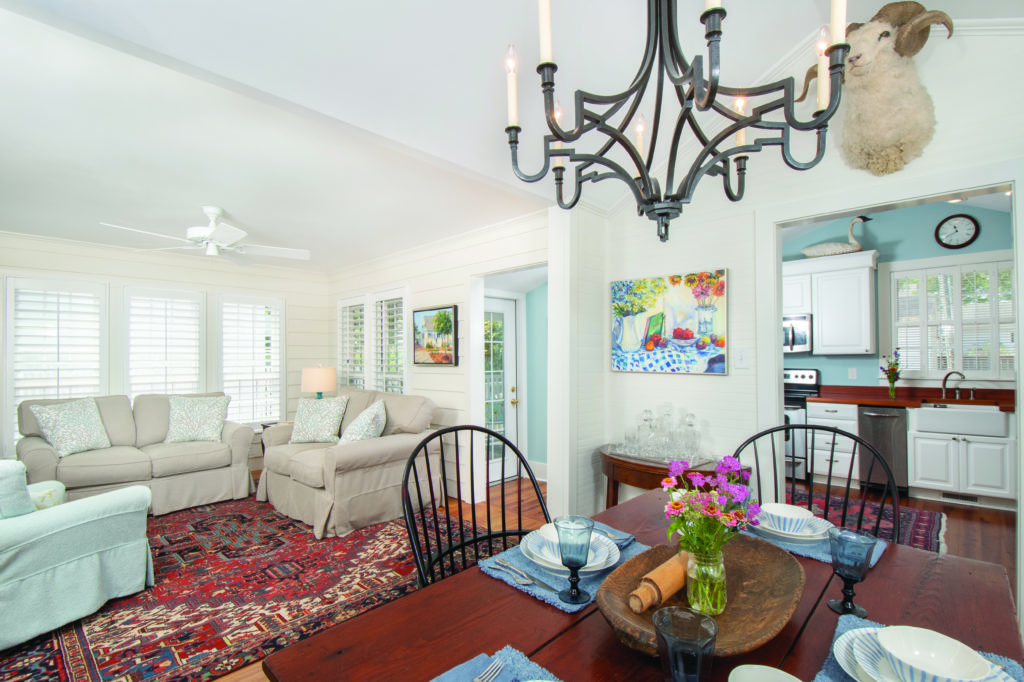
__
This article originally appeared in the July 2022 issue of WALTER Magazine

